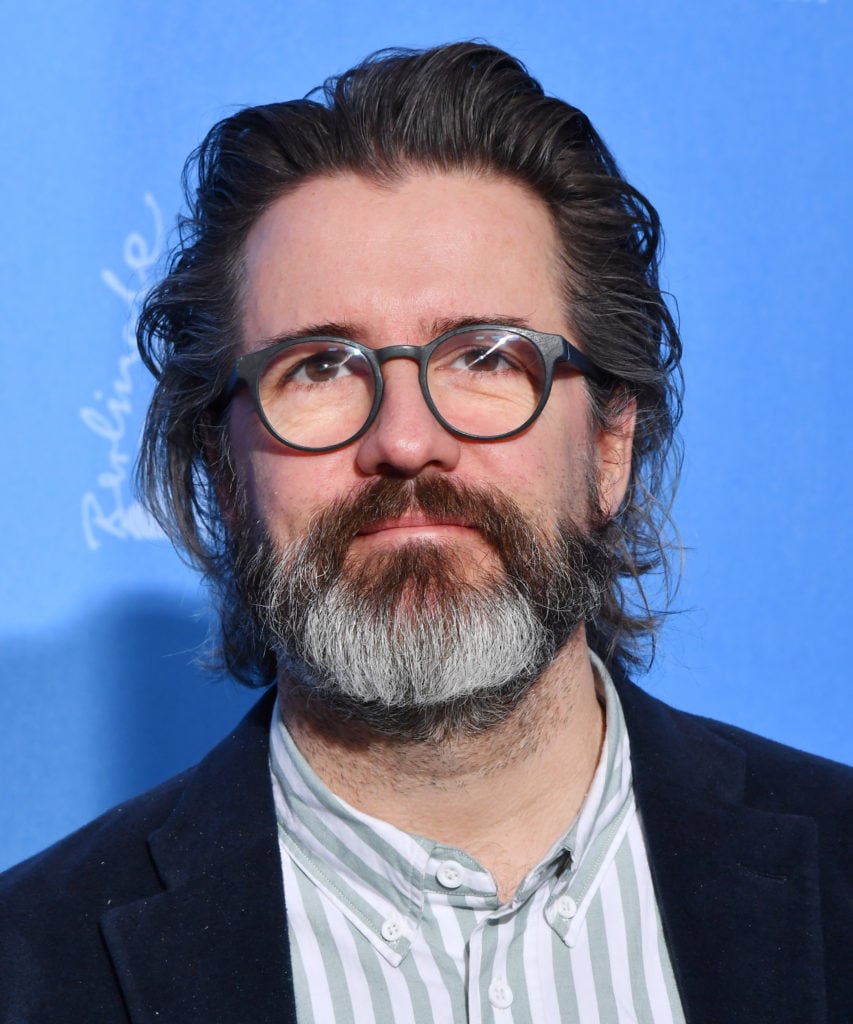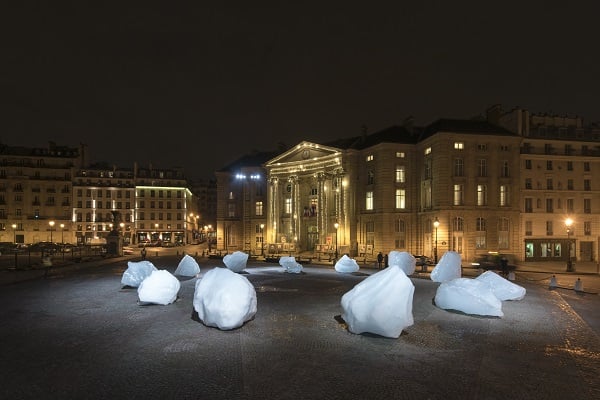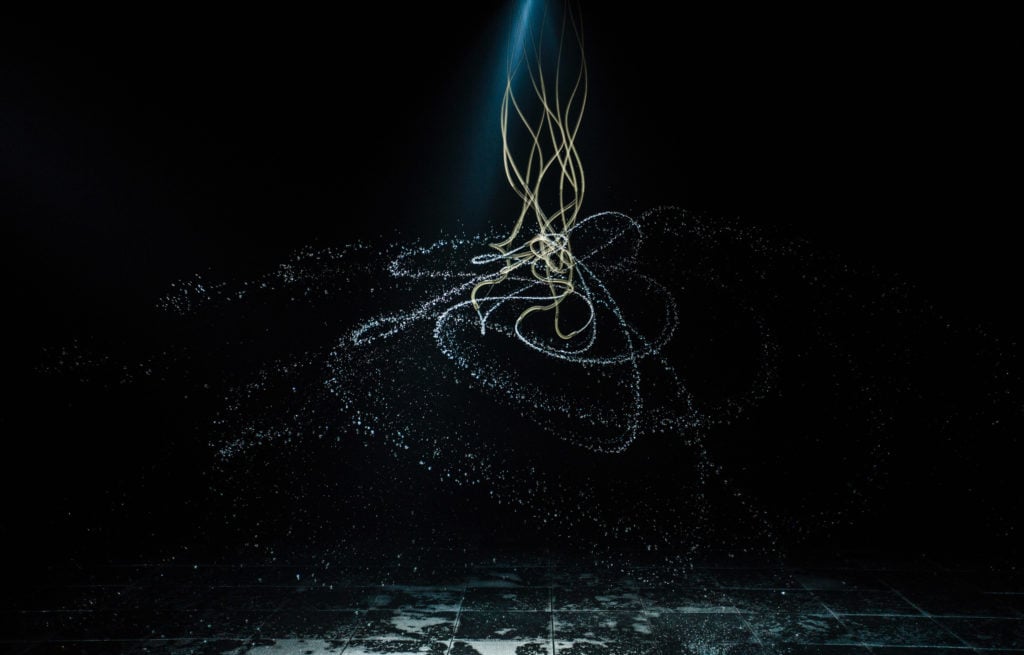Art World
Olafur Eliasson Brings an Immersive Light Installation to Smog-Filled Beijing in His First Solo Exhibition in the Chinese Capital
Set to open at the Red Brick Art Museum in March, the show features a new site-specific piece.

Set to open at the Red Brick Art Museum in March, the show features a new site-specific piece.

Kate Brown

The Icelandic-Danish artist Olafur Eliasson will present a major exhibition in Beijing’s Red Brick Art Museum. Opening on March 25 (until August 12) it is arguably Eliasson’s first solo show in the Chinese capital, some eight years after the 2010 exhibition “Feelings are facts” at the Ullens Center for Contemporary Art, which featured a collaboration between the artist and the Chinese architect Ma Yansong.
Known for his large-scale works that play with natural phenomena and the viewer’s perception, Eliasson has also become something of an art-world advocate for social issues, including alternative energy and climate change, although the artist avoids any strict categorizations as such. In 2012, he debuted Little Sun, his consumer-oriented solar power lamps aimed at increasing the everyday accessibility of alternative energy. His 2015 installation Ice Watch was a sculptural intervention of 12 immense blocks of ice that were harvested as free-floating icebergs from Greenland. The artist had them transported to Paris, where they were arranged in clock-like formation at the Place du Panthéon, melting away during the COP21 climate talks.

Ice Watch by Olafur Eliasson and Minik Rosing, Place du Panthéon, Paris, 2015.
Photo: Martin Argyroglo ©2015 Olafur Eliasson.
This new exhibition, titled “Olafur Eliasson: the unspeakable openness of things,” comes to Beijng at a critical time: Just this week, it was reported that China has issued an “orange alert” for Beijing and other cities, the second highest warning in its four-tier air quality monitoring system. As smog and its toxic particulate matter envelope the city yet again, Eliasson’s upcoming show at the Beijing museum—which will be largely centered around light and mist—may have gained an unintentional sense of urgency and, even, a political undertone.
“Climate change is one issue that the works may host, but the relationship between viewer and artwork is crucial, and the relationship between viewer and the other viewers. This is where the meaning of the work is produced,” Eliasson tells artnet News. “China must play an important role in fighting climate change, of course, but I’m not sure that any country has a non-paradoxical relationship to this issue. It is a global problem and the solution will have to be global.”
Set in an expansive site that spans over 20,000 square meters with upwards of 10,000 square meters of exhibition space, the Red Brick Art Museum was opened by the collector-couple Yan Shijie and Cao Mei in 2014. Eliasson’s exhibition there is the product of a close dialogue between the artist’s studio and Yan Shijie, who serves as the museum’s director.
“Actually, the story between Olafur Eliasson and the Red Brick Art Museum can be traced back to 2012,” Yan recalls. “Around that time, when the museum was still under construction, the artist visited the site and showed great interest in the museum garden.Over time, three of his works were acquired by the museum collection.”

Olafur Eliasson’s Water pendulum (2010). ©2010 Olafur Eliasson. Photo: Xing Yu. Courtesy the artist and Red Brick Art Museum, Beijing.
The exhibition’s title references a phrase used by philosopher (and Eliasson’s friend) Timothy Morton in describing art. “It is an idea that really resonates with me,” Eliasson says. “There is in art, I believe, always something beyond language because an artwork starts in a place before speech, with a vague feeling or notion, and it progresses to a state where it eventually becomes something which you, the audience, then encounter and complete.”
Each space throughout the museum’s winding architecture will conjure a discrete environment dominated by mist, light, water, geometry, and illusion. The viewer will move through the immersive installations, beginning with the intense light of a new artwork, that was created especially for the site. Also on view is the expansive work Rainbow assembly (2016), in which light is refracted across a vast mist of water droplets to reveal the visible spectrum. The work travels to Beijing from Korea, where it had previously been exhibited at Leeum, Samsung Museum of Art in Seoul last year.

Olafur Eliasson, Rainbow assembly, 2016. © Olafur Eliasson. Courtesy the artist, Tanya Bonakdar Gallery, New York and neugerriemschneider, Berlin.
Further works on show include Your sound galaxy (2012), Water pendulum (2010) and The blind pavilion (2003)—all of which are part of the museum’s collection. The latter, an optical structure with angular panes of clear and black glass was first shown for Eliasson’s Danish pavilion at the 50th Venice Biennale, in 2003.
The exhibition coincides with the second edition of Beijing Gallery Weekend (March 23–30 ) as well as Art Basel Hong Kong (March 29–31).
Olafur Eliasson’s “The unspeakable openness of things” will be on view at the Red Brick Art Museum from March 25 until August 12.